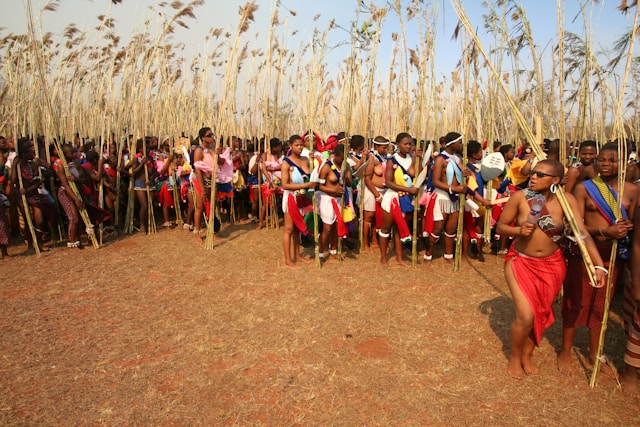Swazi Reeds Festival
The Swazi Reeds Festival, also known as Umhlanga, is a traditional ceremony celebrated in Eswatini (formerly Swaziland). This annual event is one of the most significant cultural festivals in the country, reflecting the rich heritage and traditions of the Swazi people. Here are some key aspects of the festival:
Historical and Cultural Significance
Umhlanga was introduced by King Sobhuza II in 1940, inspired by a traditional rite performed by the Zulu people. The festival aims to celebrate chastity among young girls, pay tribute to the Queen Mother, and promote unity and cultural pride among the Swazi people.
Timing and Duration
The festival usually takes place in late August or early September, aligning with the harvesting season of the reeds used in the ceremony. It lasts for eight days, with various activities and rituals leading up to the main event.
Participants and Preparation
Thousands of unmarried and childless girls and young women, known as "maidens," participate in the festival. They come from different regions of Eswatini and even from neighboring countries. The participants dress in traditional attire, often adorned with colorful beads and ornaments.
In preparation, the maidens walk long distances to the riverbanks to cut tall reeds. These reeds are then bundled and carried back to the royal village of Ludzidzini, where the main festivities are held.
